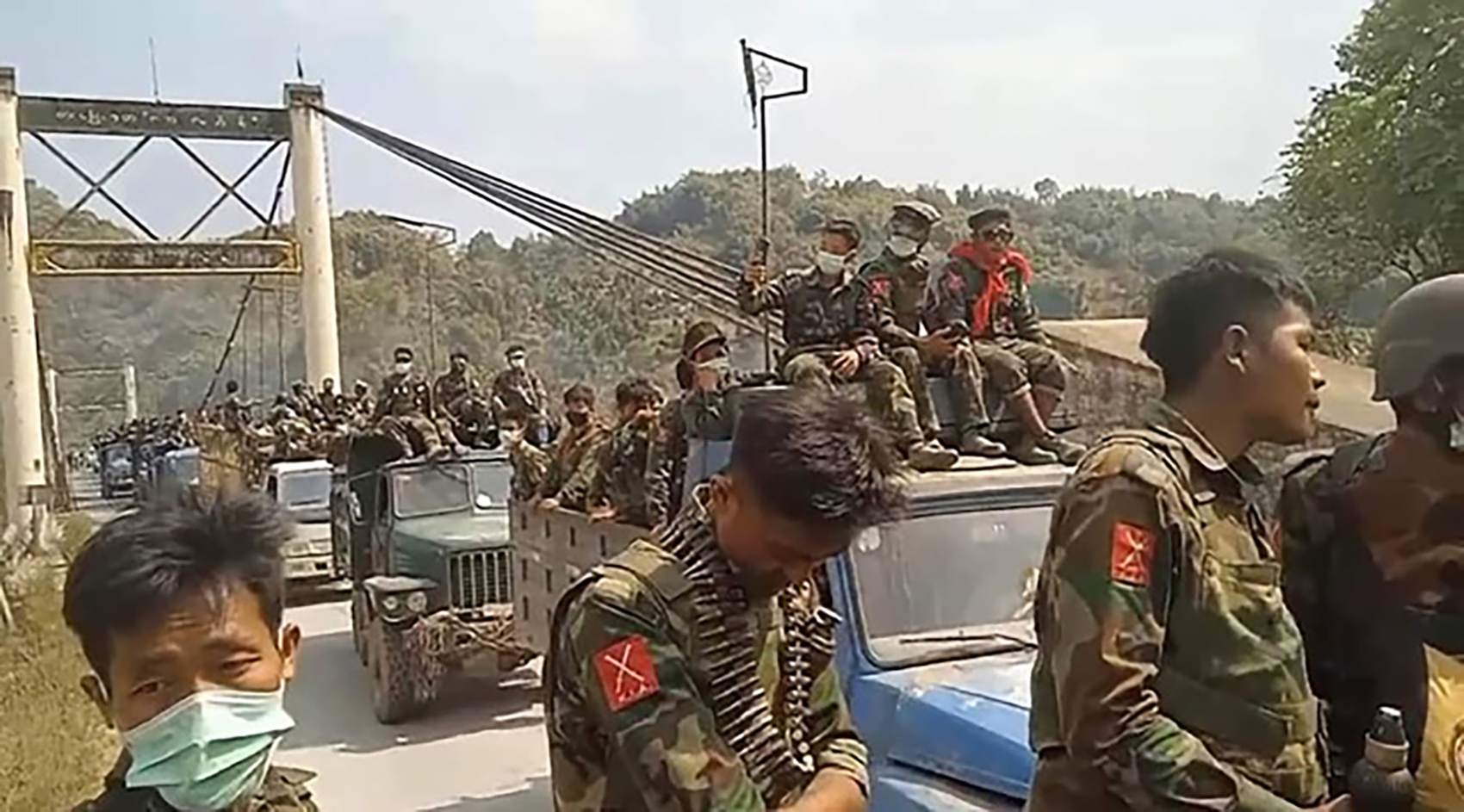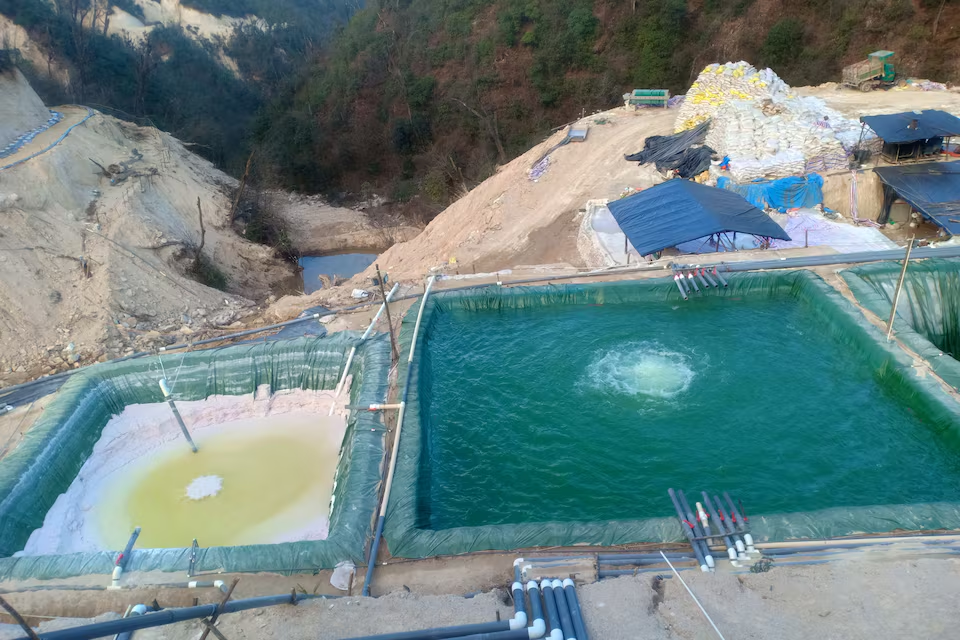CHIANG RAI– China’s hold over heavy rare earth processing has grown more intense, as Beijing now uses its grip on these minerals to sway events in Myanmar and protect its interests, while its mining methods cause pollution that is now reaching northern Thailand.
The conflict in Kachin State, Myanmar, has become a focus point, drawing attention to both supply concerns and environmental fallout. Here, the Kachin Independence Army (KIA) continues to fight the Chinese-backed military for control of Bhamo, a town less than 100 km from China’s border.
Insiders report to Reuters that China issued a strong warning to the KIA: either stop advancing towards full control of Bhamo, or China will halt rare earth purchases from KIA-held areas. This move, discussed during talks in May 2025 between Chinese diplomats and the KIA, highlights Beijing’s readiness to use its position in the rare earth market for political aims.
Since gaining control of Kachin’s main rare earth mining region in October 2024, the KIA has set a 20% tax on miners and limited production of key minerals like dysprosium and terbium. These steps have sent global prices soaring.
Chinese customs figures show rare earth shipments from Myanmar dropped to 12,944 metric tonnes in the first five months of 2025, about half compared to the same time last year, though there was a slight increase from April to May.
The Battle for Bhamo
The ongoing fight for Bhamo has drained KIA resources and caused heavy losses, bringing mining in Kachin State to a near standstill. Nearly half of the world’s heavy rare earths come from this region.
Experts caution that if these disruptions last, the world may face a shortage by the end of the year, which could push prices even higher. This could hit industries such as electric vehicles, wind turbines, and the defence sector.
Neha Mukherjee from Benchmark Mineral Intelligence in the UK notes that prices outside China could jump quickly during any short-term disruptions.
While China demands that the KIA restore order to keep the rare earth trade flowing, it seems to overlook the environmental damage caused by its mining firms in Myanmar. In Shan State, new rare earth mines are opening with protection from a militia linked to Beijing.
These operations use in-situ leaching, a process that injects harmful chemicals into the ground to extract minerals. This has led to severe pollution. Satellite images show major open-pit mines near the sources of the Kok and Sai rivers, which both flow into the Mekong.
Tests by Thailand’s Pollution Control Office in Chiang Mai in April 2025 found dangerous levels of arsenic and other heavy metals, with the contamination spreading downstream to Chiang Rai and further.
Chemicals from Chinese mines
People in Chiang Rai and Chiang Mai are already feeling the effects. Just before Songkran in April, local officials warned residents to avoid the Kok River after reports of skin rashes, sick elephants, and fish deaths in Myanmar.
A man from Mae Ai, Chiang Mai, said his rash lasted over a month after swimming in the river; a local teenager also reported symptoms. The Mekong River, crucial for millions in Southeast Asia, now shows higher arsenic levels, raising worries that the pollution will reach Laos, Cambodia, and Vietnam.
Environmental groups and local communities are speaking out. Ailey Zaulawt, a researcher from Myanmar based in Chiang Rai, said people can no longer use the river for daily needs or cultural events. The Shan Human Rights Foundation reported that floodwaters from Typhoon Yagi in September 2024 likely washed toxic runoff from Mong Pawk’s mines into homes and waterways, making the problem worse.
Despite these warnings, both the Myanmar junta and Chinese authorities have taken few steps to control the mining. The Chinese embassy in Bangkok released a statement on 8 June calling for “friendly dialogue” over the contamination, but there has been no real action.
Toxic Rivers in Northern Thailand
The rapid growth in rare earth mining in Myanmar, driven by global demand and China’s loose oversight, has turned the area into what campaigners call a “sacrifice zone.”
In Kachin, mountains now bear scars from chemical pools, and streams have become acidic with high arsenic, putting at risk a region home to 1,500 unique species. Many workers lack proper safety gear. One miner near Pangwa described mixing acid in collection ponds while wearing only a raincoat and gloves, saying if it splashes in your mouth, it feels like you are eating it.
Thailand’s response has drawn criticism. Pianporn Deetes, a well-known environmental activist, has asked the Thai government to step up talks with Myanmar, China and the United Wa State Army (which controls parts of Shan State) to halt mining.
She warned that if action is not taken, health problems could last for years, pointing to the drawn-out Klity Creek lead poisoning case as a warning.
As China tightens its hold on Myanmar’s rare earth minerals to secure its interests, the cost to people and the environment continues to grow.
For those living in Chiang Rai and Chiang Mai, the pollution in their rivers serves as a harsh reminder that the global push for these minerals brings serious risks that now reach into Thailand’s communities.

















